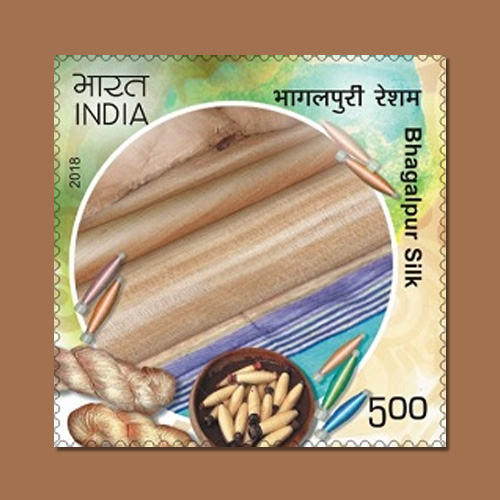Traditional Craft of India: Bhagalpur Silk
2019-12-06 Fri
Each state of India posses its technique, style, designs of weaving. According to many records and gazettes describes India as the oldest cotton-producing center of the world. There are many types of textile and handloom in India that has been practiced and improvised for centuries.One of this is the traditional silk of Bhagalpur, it comes from the historical town of Bhagalpur coming from the southern bank of Ganga River. Bhagalpur was renowned for manufacturing quality silk fabrics and sarees. In recent times Bhagalpur is an important hub for the export and manufacturing of Mulberry, Tasar, Eri Silks, cotton, and their blinds. These types of yarn developed from Tasar cocoons are Reeled Tasar, Katiya, Gichha and Balkal yarn. Various qualities of mulberry silk yarns are - Reeled, Spun, Dupion, Noil, Matka, etc.
Bhagalpur silk handloom is recognized by the India Post via stamp issued in 2018. This textile consists of GI- Geographical Indication mark to recognize the corresponding to the geographical location of the product. These marks ensure that that none other than those registered as authorized users or in the geographical area are allowed to use the popular product name.
Latest News
-
Malwa Sultan Mahmud Shah Silver Coins
2025-09-11 ThuMalwa Sultan Mahmud Shah minted silver coins in round and square flans. <br><br> For round coins,...
-
Malwa Sultan Mahmud Shah Billon coin
2025-08-26 TueMalwa Sultan Mahmud Shah's billon coins followed three weight standards: 100 rati, 96 rati, and 80 r...
-
Fascinating Archaeological Facts on Postage Stamps - 91
2025-08-23 SatRhinoceros is one of the oldest land mammal species existing in India. There are five species of rhi...
-
Fascinating Archaeological Facts on Postage Stamps - 90
2025-08-23 SatUthiramerur, a Village in Kanchipuram, Tamil Nadu, is notable for its Temple inscriptions that descr...
-
Fascinating Archaeological Facts on Postage Stamps - 89
2025-08-21 ThuThe term “millet” is derived from the Latin word “milum,” which translates to grain. millets...

